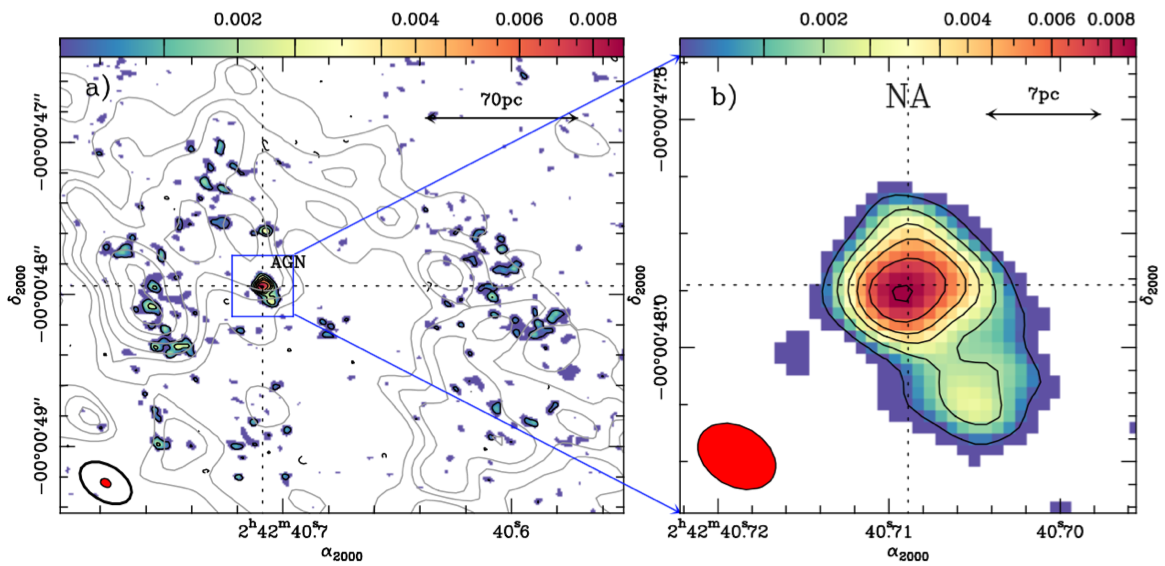
HST image and GTC/OSIRIS spectra of the “Teacup” containing the Hα+[NII] lines. We highlight prominent emission line features such as the NE and SW bubbles. For further details, see Villar-Martín et al. 2017.


HST image and GTC/OSIRIS spectra of the “Teacup” containing the Hα+[NII] lines. We highlight prominent emission line features such as the NE and SW bubbles. For further details, see Villar-Martín et al. 2017.

Artist impression illustrating a super-massive black hole with X-ray emission emanating from its inner region (pink) and ultrafast winds streaming from the surrounding disk (purple). Credit: ESA
Active Galactic Nuclei (AGN) are thought to have a profound effect on large scales through feedback mechanisms. AGN gas outflows release vast amounts of energy into the interstellar medium and can clear out the surrounding gas, possibly regulating star formation in the host galaxy as well as preventing further gas accretion onto the black hole. Such feedback may well contribute to the intimate observed relationship between the central black hole and the host galaxy properties.

The dust continuum emission at 694 GHz mapped by ALMA in the circumnuclear disk of NGC1068. See García-Burillo et al. 2016 for further details.
An international team of astronomers lead by the spanish astronomer Santiago García-Burillo (OAN, Madrid), and with the participation of CAB scientists (Almudena Alonso Herrero and Luis Colina), have been able to resolve for the first time the dusty torus around the massive black hole in the nucleus of the nearby active galaxy NGC 1068.